How to plant eggplant and bell peppers (Best way to plant eggplant and bell peppers)
How to grow japanese eggplant and bell peppers in open culture. Last time, I prepared the soil for growing eggplants and bell peppers. (I added fertilizer to the plot and made the bed.) About 45 days have passed since then. This time, I will plant the eggplant and bell pepper seedlings. (Planting eggplant and bell pepper plants in garden.)
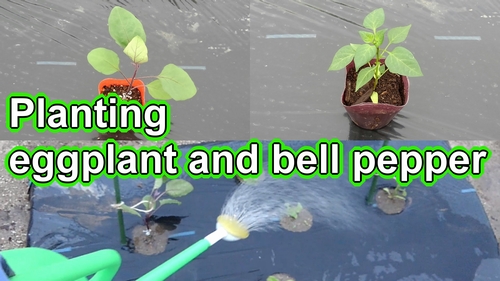
Japanese eggplants, white eggplants, and other types of eggplants are grown in the same way. So, if you learn how to plant these seedlings now, you can handle different varieties in the future.
The same goes for bell peppers. Since bell peppers are related to sweet peppers, the way you plant the seedlings is the same as for green peppers or chili peppers.
For both eggplant and bell pepper, the bed size is about 60cm x 60cm (2 feet x 2 feet).
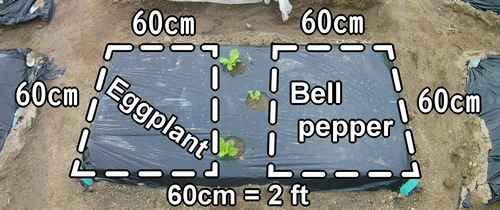
When to plant eggplant and bell peppers? The best time to plant eggplants and bell peppers is from late April to early May.
This timing is common for most spring and summer vegetables. It’s a good idea to remember that “spring and summer vegetables grown from seedlings are usually planted around May".
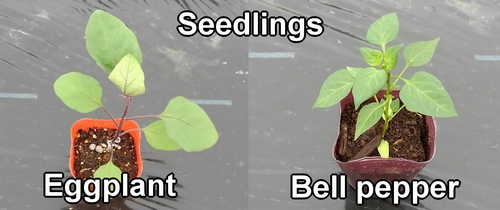
I prepared the soil for eggplants and bell peppers in mid-March.
Ways to plant eggplant and bell pepper (Japanese Eggplant and bell pepper planting guide)
To plant the eggplant and bell pepper seedlings, first, make hole in the planting plot. (I use a mulch cutter to make the hole.)
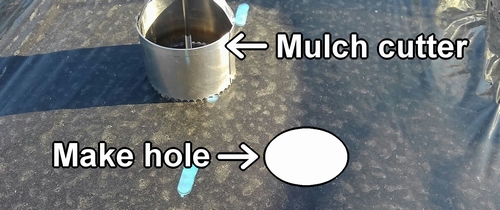
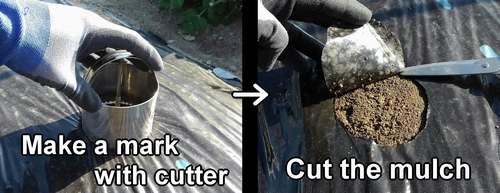
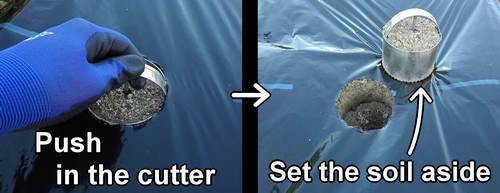
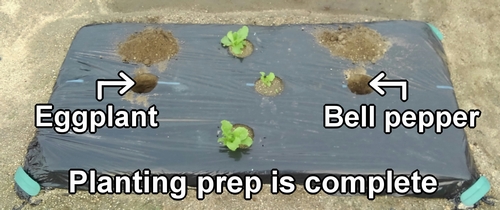
After making the hole for planting eggplant and bell pepper, check the depth and size of the hole. Let’s place the potted eggplant and bell pepper plants into the hole. It should be easy to check once you actually place them in.
If there are any issues such as the hole being too shallow or deep, or too large or small, adjust the planting hole accordingly. Using a trowel is useful for adjusting the size of the hole.
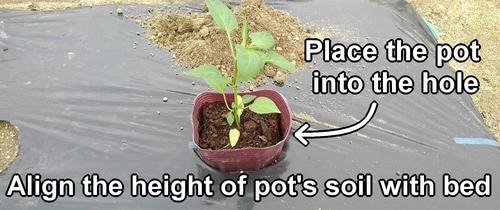
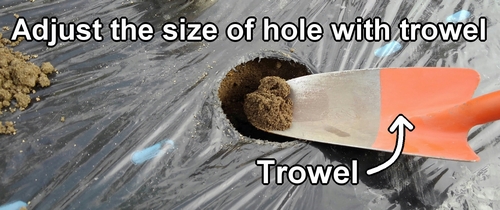
Fill the hole with water up to 80%. Wait a little until the water has drained before planting the eggplant and bell pepper seedlings.
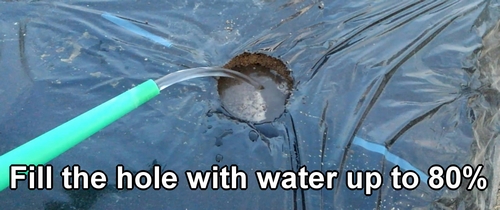
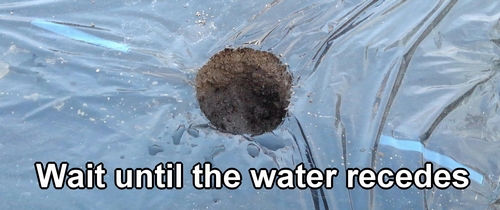
Filling the planting hole with water is an important step in planting. Vegetables grown from seedlings, like eggplant and bell pepper, often have very little soil in their pots and the soil is usually dry.
It’s like the seedlings are “thirsty”. If you fill the planting hole with water before putting the seedling in, it helps the plant grow better. When the seedling’s roots take well to the soil, we say it has “taken root" or has a “good survival rate".
Eggplant and bell pepper seedlings are delicate. Handle eggplant and bell pepper seedlings gently during planting to prevent them from breaking or getting damaged. The way to plant seedlings is to first pinch the stem of the seedlings between your fingers, and turn over the pot.
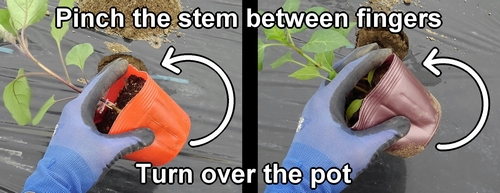
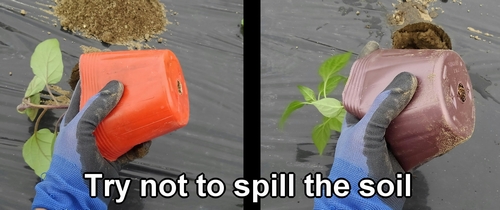
Gently remove the eggplant and bell pepper seedlings from the pot and plant in the hole. Try to avoid breaking the soil around the seedlings as much as possible.
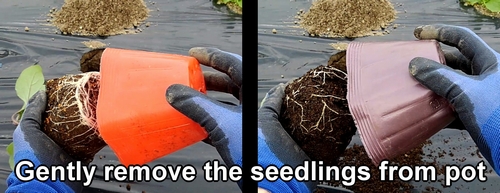
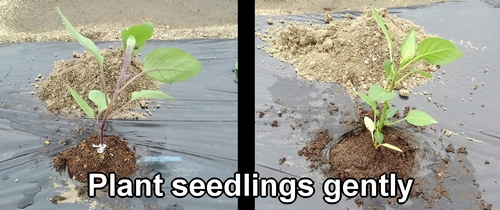
After planting the eggplant and bell pepper seedlings, return the previously set aside soil and fill the gaps around the hole. Once the gaps are filled, gently press down the soil around the base of the seedlings, being careful not to damage them.
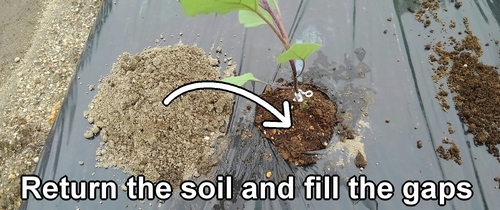
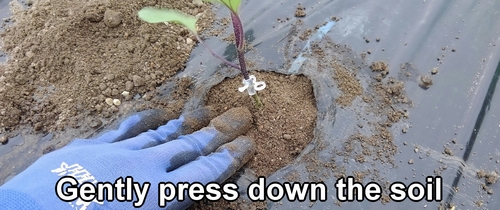
If there is a gap between the soil in the pot and the soil in the garden, the roots may have a hard time growing into the garden soil. Roots won’t grow further if they hit an empty space, making it difficult for the seedling to take root. For vegetables like eggplant and bell pepper that produce fruit, poor rooting can lead to a lower harvest, so make sure the soil is tightly packed around the roots.
Any excess soil from planting eggplant and bell pepper should be dropped beneath the bed. If the leftover soil comes into contact with the leaves, it can potentially lead to diseases. Let’s keep the surface of the mulching film clean.
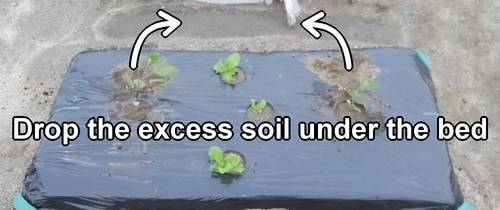
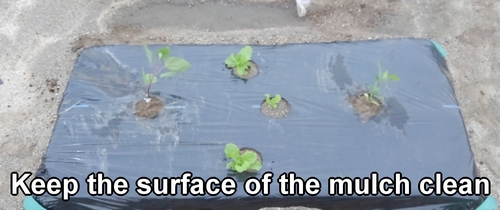
Staking eggplant and bell pepper (Placing a temporary stake) – Eggplant and bell pepper plant care
Since the newly planted eggplant and bell pepper seedlings are still fragile, set up stakes alongside them for support. (Insert the stakes at an angle, outside the planting hole to avoid damaging the roots.)
The temporary stake is 90cm (3 feet) long and 1.1cm (0.4 inches) in diameter. (Best way to grow eggplant and bell pepper.)
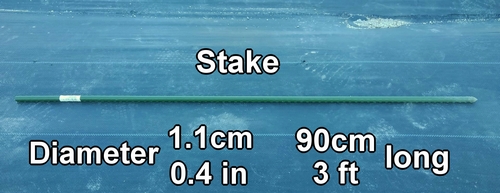
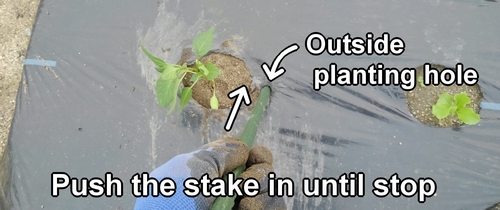
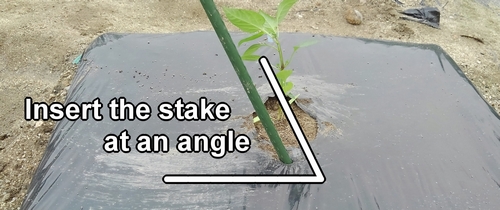
After setting up the stake, tie a string to support the eggplant and bell pepper. Use twine. Wrap the twine in a figure-eight shape around the stem and the stake. Since the stem will grow thicker, tie it loosely. (Eggplant and bell pepper plant support.)
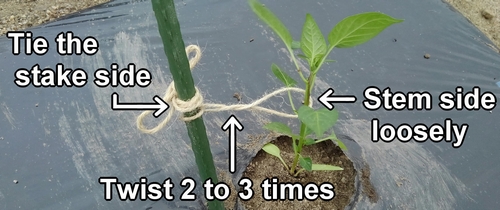
Water in newly planted eggplant and bell pepper very thoroughly. (To establish the eggplant and bell pepper plant in the bed.) Now the eggplant and bell pepper planting is complete. (Best way to plant eggplant and bell pepper.)
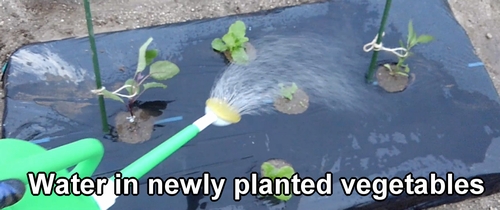
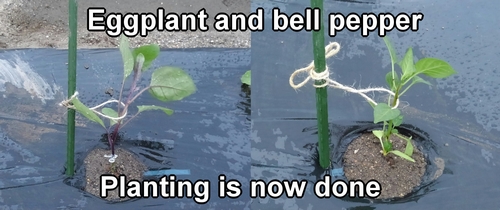
Following is the video for how-to. English subtitles are available.
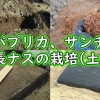
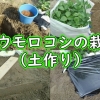
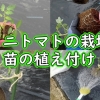
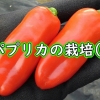
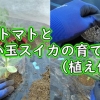
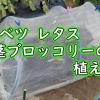
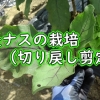

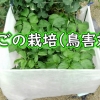
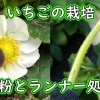
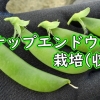
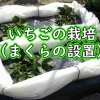
Discussion
New Comments
No comments yet. Be the first one!